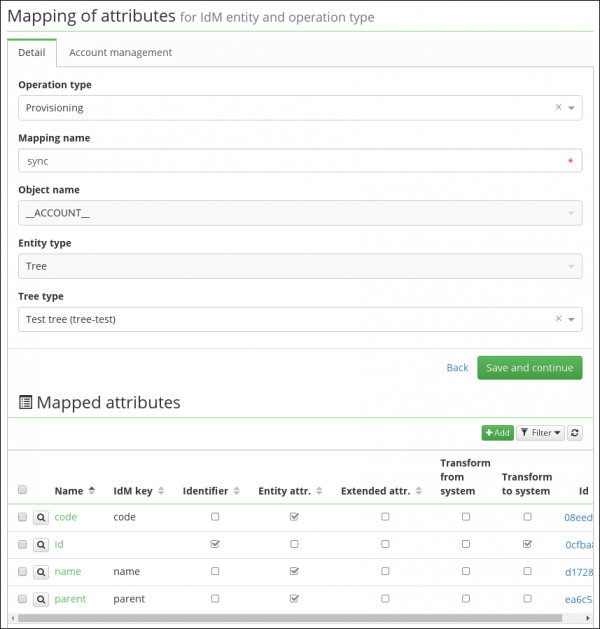Tree structures: indexing and searching
To make queries in an efficient manner, we provide an index next to the tree structure with the following advantages:
• the possibility to ask about the children of any element of the tree with one query (all the children in the downward direction) • likewise, the possibility to ask about all the parents of any element of the tree with one question
You can search identities relying on an index based on:
• organizational structure (through a contractual relationship) • the display of the identity position within the organizational structure
Rebuilding an index
There are situations when you need to re-index the organisational structure. To do so, you can employ the RebuildTreeNodeIndexTaskExecutor task, where you need to enter the code of the structure which should be re-indexed.
Synchronization - tree nodes
Just like identities, you can also synchronize the tree structure. Here are steps to follow in order to synchronize the organizational structure:
- First you need to create a type of structure. Say, ORGANIZATIONS.
- On the system, create a mapping for an entity type Tree. Select the type of structure you want (ORGANIZATIONS).
- Create the Required mapping attributes:
- identifier - The attribute contains an unambiguous element identifier from the end system. Used for parenting. It must be labeled identifier.
- code - The code is a unique identifier in the tree.
- name - Name of the element. This name will be displayed in the tree component.
- parent - An attribute pointing to your parent. From mapping point of view, this attribute must return identifier parents, Identifier from the end system. From the IDM view, parent contains a reference to the parent object, ie IdmTreeNode. Searching and conversion between system identifier and parent IDM (IdmTreeNode) do synchronization automatically.
- Create optional mapping attributes. A typical example is some extended attribute.
- We create sync to select the mapping you created. The tree structure synchronization configuration is similar to the synchronization of identities. In addition, it is possible to define (in the form of a Groovy script) how to "know" the roots of the tree.
- Start synchronization.Tree sync is always run as reconciliation at this time. It means setting your own filter or token will have no effect.
How to synchronize all nodes under a node already existing
Sometimes you need to synchronize all nodes from the source system by embedding them underneath a node which already exists in IDM. The good news is you can.
(TO BE COMPLETED)
Provisioning of tree nodes
Tree provisioning behaves differently than the provisioning of identities. The main difference is the absence of a separate account management mechanism.
In the case of trees, account management is directly linked to the creation / modification / deletion event of the tree node.
(TO BE COMPLETED)
